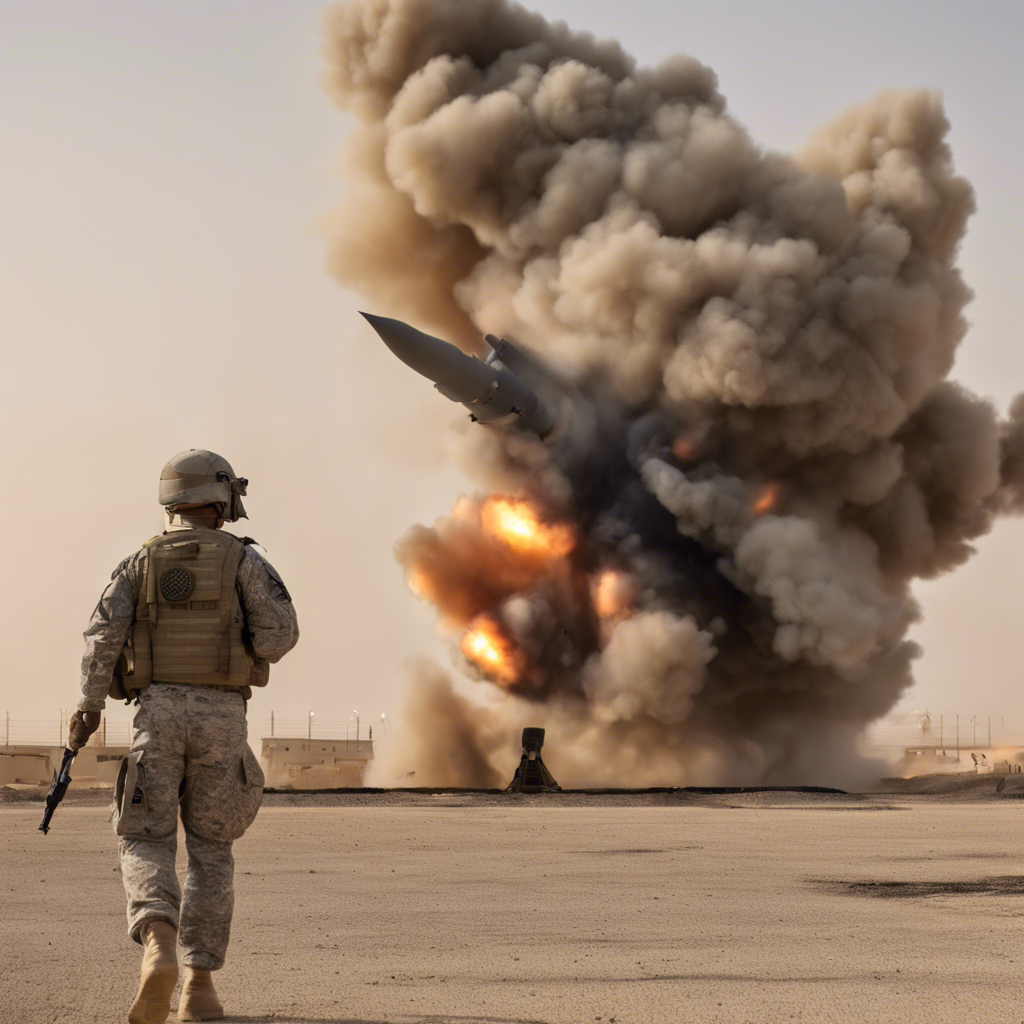US Personnel Injured in Ballistic Missile Attack on Al-Asad Air Base in Iraq

Growing tension in the region as Israel-Hamas war passes 100 days
In a recent escalation of violence in the Middle East, US personnel were injured in a ballistic missile attack on Al-Asad Air Base in Iraq. The attack, which occurred on Saturday, resulted in minor injuries, although the exact number of personnel injured is still unclear. This incident comes at a time of heightened tension in the region as the Israel-Hamas war enters its 100th day. The use of more powerful ballistic missiles, a rarity compared to rockets or drones, underscores the increasing threats faced by US and coalition forces from Iranian-backed Shia militias. This article will delve into the details of the attack, its implications for the ongoing conflict, and the broader security challenges in the region.
The attack and its aftermath
Multiple ballistic missiles and rockets targeted Al-Asad Air Base, with most being intercepted by the base’s air defenses. However, some missiles did make impact, resulting in injuries to US personnel. The US Central Command confirmed the attack and stated that “a number” of personnel are being evaluated for traumatic brain injuries. While the extent of the injuries is not yet known, this incident highlights the ongoing threats faced by US forces in Iraq.
Iranian-backed militias and their role in the conflict
The attack on Al-Asad Air Base is the latest in a series of attacks by Iranian-backed Shia militias against US and coalition forces. Since October 7, there have been over 143 attacks on US and coalition forces in Iraq and Syria. These attacks have intensified since the start of the Israel-Hamas war, with Iranian-backed militias citing the conflict as a reason for their actions. The Islamic Resistance in Iraq, an Iranian-backed militia group, claimed responsibility for the attack on Al-Asad Air Base, stating that it was a response to the “Zionist entity’s massacres” against the Palestinian people in Gaza.
The broader implications for the region
The ongoing conflict between Israel and Hamas has created a volatile environment in the Middle East, with various actors taking advantage of the situation to further their own agendas. The attack on Al-Asad Air Base underscores the risk of the conflict spreading beyond the borders of Israel and Gaza. The UN secretary-general’s special representative for Iraq has warned that the region is at a “critical juncture,” with Iraq at risk of being further drawn into the conflict. The Iraqi government has called for international forces to leave the country, citing tensions caused by US strikes against Iranian-backed militias.
The US response and the challenges ahead
The Pentagon has maintained that the presence of US forces in Iraq is still at the invitation of the Iraqi government and that nothing has changed. However, the recent attacks and tensions with the Iraqi government highlight the challenges faced by the US in maintaining its presence in the region. The US is also facing threats in the Red Sea and the Gulf of Aden, with Iranian-backed Houthi rebels launching repeated attacks on international shipping lanes. President Joe Biden has stated that the US strikes targeting Houthi assets will continue, but it remains to be seen how effective these strikes will be in deterring further attacks.
Conclusion:
The ballistic missile attack on Al-Asad Air Base in Iraq, resulting in injuries to US personnel, is a stark reminder of the ongoing security challenges faced by the US and coalition forces in the region. The attack, claimed by an Iranian-backed militia group, highlights the complex dynamics at play in the Middle East, with the Israel-Hamas war serving as a catalyst for increased tensions. As the conflict continues, it is crucial for all parties involved to seek a peaceful resolution and prevent further escalation that could have far-reaching consequences for the region. The US, in particular, faces the challenge of balancing its military presence with the need to address the concerns of the Iraqi government and navigate the broader security threats in the area.

